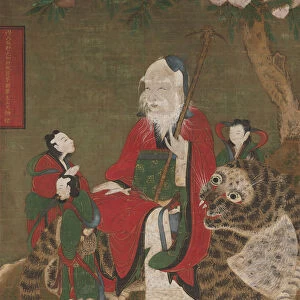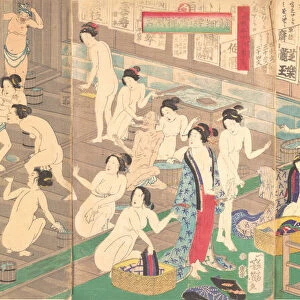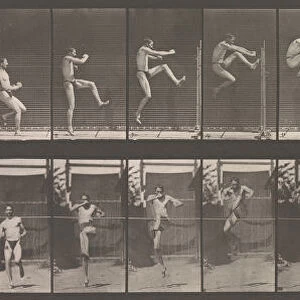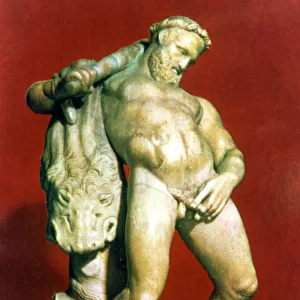Home > Europe > United Kingdom > England > Cleveland
Munja-Chaekgeori Screen (Character-Books Screen), late 1800s. Creator: Unknown
![]()

Wall Art and Photo Gifts from Heritage Images
Munja-Chaekgeori Screen (Character-Books Screen), late 1800s. Creator: Unknown
Munja-Chaekgeori Screen (Character-Books Screen), late 1800s. During the late 1800s in Korea, local and central governments actively promoted Confucian teachings in fear of the influx of foreign ideas and beliefs like Christianity. Under the patronage of such leadership, many types of munjado (literally meaning " characters" ) screens were produced. Such paintings adorned Korean aristocrats studies as well as the classrooms of Confucian academies. The eight Korean characters inscribed on the upper portion of each panel of this screen refer to the values of Confucian teachings of the Joseon dynasty: filial piety ( hyo ), brotherly love ( je ), loyalty ( chung ), trust ( sin ), propriety ( yae ), righteousness or justice ( eui ), modesty or integrity ( yeom ), and humility or the feeling of shame ( chi ). The lower section of each panel depicts the imagery of books, scholarly utensils, and luxurious objects called chaekgeori (loosely translated as " book and things" ), another pictorial genre popular in late 19th-century Korea, a period when both aristocrats and the newly rich were passionately devoted to amassing books and antiquities. Primarily distinctive to the Ganwon province located in northeast Korea, this munja-chaekgeori screen is not only an extremely rare type in which two independent pictorial genres are harmoniously married, but it is also a work that exemplifies the playful nature of Korean art
Heritage Images features heritage image collections
Media ID 19649047
© Heritage Art/Heritage Images
FEATURES IN THESE COLLECTIONS
> Europe
> United Kingdom
> England
> Cleveland
EDITORS COMMENTS
The Munja-Chaekgeori Screen, dating back to the late 1800s in Korea, is a captivating piece of art that reflects the cultural and political climate of its time. Created by an unknown artist under the patronage of local and central governments, this screen served as a visual representation of Confucian teachings during the Joseon dynasty. The upper portion of each panel features eight Korean characters representing key values upheld by Confucianism: filial piety, brotherly love, loyalty, trust, propriety, righteousness or justice, modesty or integrity, and humility. These principles were highly regarded in Korean society at that time. In the lower section of each panel lies another pictorial genre known as chaekgeori. This genre depicted books, scholarly utensils, and luxurious objects - all symbols associated with knowledge and wealth. The popularity of chaekgeori during this period can be attributed to both aristocrats and newly rich individuals who had a fervent passion for collecting books and antiquities. What makes this particular munja-chaekgeori screen unique is its harmonious marriage between two independent pictorial genres. It showcases not only the artistic skill but also the playful nature inherent in Korean art. Preserved by Heritage Art/Heritage Images today, this print allows us to appreciate the intricate details and symbolism embedded within this historical masterpiece from late 19th-century Korea.
MADE IN AUSTRALIA
Safe Shipping with 30 Day Money Back Guarantee
FREE PERSONALISATION*
We are proud to offer a range of customisation features including Personalised Captions, Color Filters and Picture Zoom Tools
SECURE PAYMENTS
We happily accept a wide range of payment options so you can pay for the things you need in the way that is most convenient for you
* Options may vary by product and licensing agreement. Zoomed Pictures can be adjusted in the Cart.













